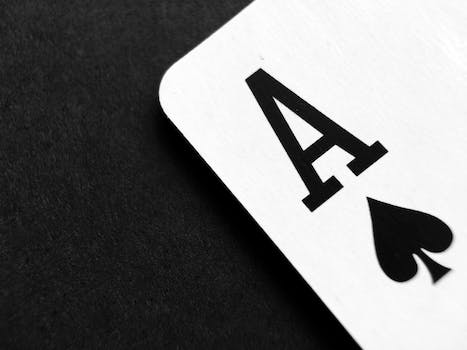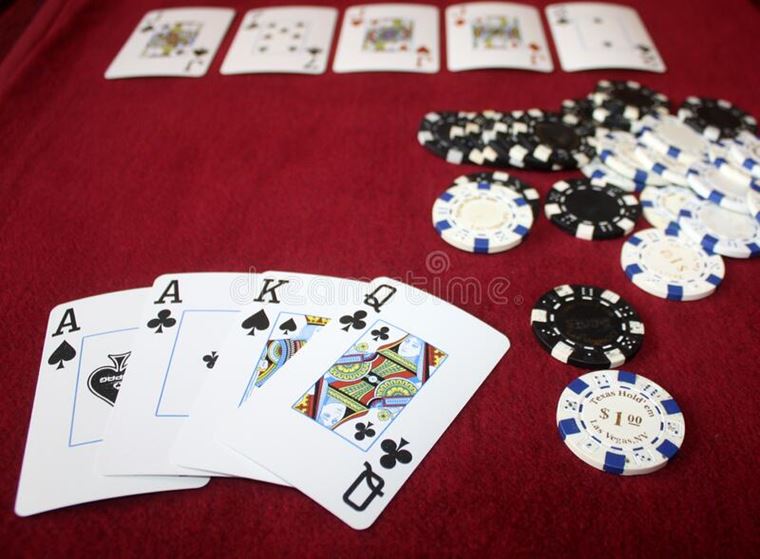Introduction:
“Strategizing with Poker Odds: Your Handbook for Mastering Poker Probabilities” is a comprehensive guide that aims to equip poker players with the necessary knowledge and skills to make informed decisions based on the probabilities and odds involved in the game. By understanding and effectively utilizing poker odds, players can enhance their strategic thinking and maximize their chances of success at the poker table. This handbook provides a step-by-step approach to calculating and interpreting poker probabilities, covering various aspects such as hand rankings, outs, pot odds, implied odds, and expected value. Whether you are a beginner or an experienced player looking to sharpen your skills, this handbook serves as an invaluable resource to help you navigate the complex world of poker probabilities and improve your overall gameplay.
Understanding the Basics of Poker Odds: A Comprehensive Guide
Understanding the Basics of Poker Odds: A Comprehensive Guide
In the world of poker, mastering the art of strategizing is crucial for success. One key aspect of this skill is understanding poker odds and probabilities. By familiarizing yourself with these concepts, you can make more informed decisions at the table and increase your chances of winning.
At its core, poker is a game of incomplete information. Players are dealt a certain number of cards, and based on their knowledge of those cards and the actions of other players, they must decide how to proceed. This is where poker odds come into play.
Poker odds represent the probability of certain events happening during the course of a hand. These events could be anything from making a specific hand (like a flush or a straight) to calculating the likelihood of your opponent holding a better hand than yours. By understanding these probabilities, you can gauge the strength of your own hand and make educated decisions about whether to bet, call, or fold.
One fundamental concept in poker odds is outs. Outs are the number of cards that can improve your hand. For example, if you have four hearts and need one more to complete a flush, there are nine remaining hearts in the deck that could potentially give you a winning hand. Knowing the number of outs you have allows you to calculate your chances of hitting your desired card on future streets.
To determine the probability of hitting your outs, you can use the concept of “the rule of 2 and 4.” This rule states that after the flop, you can multiply your number of outs by either 2 or 4 to get an approximation of your percentage chance of hitting your desired card by the river. For example, if you have eight outs after the flop, multiplying by 4 gives you roughly a 32% chance of hitting your hand by the river.
Another important aspect of poker odds is pot odds. Pot odds compare the size of the current pot to the cost of a contemplated call. By calculating pot odds, you can determine whether it is profitable to make a particular bet or call based on the potential return relative to the risk.
To calculate pot odds, divide the size of the pot by the cost of your contemplated action. For example, if there is $100 in the pot and your opponent bets $20, your pot odds are 5 to 1 ($100 divided by $20). If the probability of hitting your hand exceeds your pot odds, it may be a favorable decision to call.
Understanding poker odds also involves considering implied odds. Implied odds take into account the potential future bets that could be won if you hit your desired card. These additional chips can significantly increase the profitability of a hand and should be factored into your decision-making process.
In conclusion, mastering the basics of poker odds is an essential skill for any serious player. By understanding concepts like outs, pot odds, and implied odds, you can make more informed decisions at the table and increase your chances of success. Remember, poker is a game of probabilities, and by strategizing with poker odds, you can gain an edge over your opponents and become a master of the game.
Calculating Poker Probabilities: Enhancing Your Decision-Making Skills
Calculating Poker Probabilities: Enhancing Your Decision-Making Skills
In the game of poker, mastering the art of decision-making is crucial. Every move you make can have a significant impact on your chances of winning or losing. One tool that can greatly enhance your decision-making skills is understanding and utilizing poker probabilities.
Poker probabilities refer to the likelihood of certain events occurring during a game. These events could range from getting dealt a specific hand to hitting a particular card on the flop, turn, or river. By calculating these probabilities, you can make more informed decisions at the table, giving yourself an edge over your opponents.
To begin strategizing with poker odds, it’s essential to understand the basic concept of probability. Probability is expressed as a fraction or a percentage, representing the likelihood of an event happening. In poker, this could be the chance of being dealt a pair, hitting a flush draw, or making a full house.
One common probability calculation in poker is determining the chances of getting a specific starting hand. For example, what are the odds of being dealt pocket aces? There are 52 cards in a deck, and you receive two cards. Therefore, there are only four aces available. This means that the probability of receiving pocket aces is 4/52, which simplifies to 1/13 or approximately 7.7%.
Once you have a grasp on the basics, you can move on to more advanced calculations. For instance, let’s say you’re holding a suited connector like 5 and 6 of hearts. You want to know the probability of hitting a flush draw by the river if you see the flop. To calculate this, you need to consider the number of outs available to you.
Outs are the cards left in the deck that will improve your hand. In this case, there are nine hearts remaining in the deck (assuming no other players have heart cards), which would complete your flush draw. With 52 cards in the deck and two already in your hand, there are 47 unknown cards. Therefore, the probability of hitting a flush by the river is 9/47 or approximately 19%.
Understanding poker probabilities doesn’t stop at calculating odds for specific hands or draws. It also involves considering the potential combinations of cards that could come on the board. This knowledge allows you to assess the strength of your hand compared to what your opponents might have.
For instance, let’s say you hold a pair of kings, and the flop comes with two more kings. The chances of another player having a better hand than you (a full house or four of a kind) decrease significantly since there are only two remaining kings in the deck. However, if the flop brings three low cards, it increases the likelihood of someone holding a straight or a flush draw.
By analyzing the possible combinations and their probabilities, you can make more informed decisions about whether to bet, raise, call, or fold. You can also adjust your strategy based on the changing dynamics of the game.
In conclusion, mastering poker probabilities is an essential skill for any serious player. By understanding the likelihood of certain events occurring during a game, you can make more informed decisions and gain an edge over your opponents. From calculating starting hand odds to assessing potential combinations on the board, poker probabilities will enhance your decision-making skills and lead you towards success at the poker table.
Advanced Strategies for Utilizing Poker Odds to Gain an Edge
Advanced Strategies for Utilizing Poker Odds to Gain an Edge
In the world of poker, mastering probabilities is a key factor in gaining an edge over your opponents. Understanding poker odds allows players to make informed decisions based on mathematical calculations rather than relying solely on intuition or luck. By strategizing with poker odds, players can improve their chances of winning and maximize their profits.
One essential concept when it comes to utilizing poker odds is pot odds. Pot odds refer to the ratio between the current size of the pot and the cost of a contemplated call. By comparing these two numbers, players can determine whether it is mathematically profitable to continue playing a hand. If the potential winnings outweigh the cost of calling, then making the call becomes a favorable move.
Another important aspect of utilizing poker odds is understanding implied odds. Implied odds take into account not only the current pot size but also the potential future bets that can be won if a certain hand improves. This concept requires players to assess the likelihood of improving their hand and estimate the additional bets they can win as a result. By factoring in these potential future gains, players can make more accurate decisions about whether to invest in a particular hand.
Equity is yet another crucial consideration when strategizing with poker odds. Equity refers to the share of the pot that belongs to a player based on their probability of winning the hand at any given point. By calculating their equity, players can determine the expected value of their bets and make informed decisions accordingly. For instance, if a player has a high equity, it may be wise to bet aggressively and try to build the pot. Conversely, if a player’s equity is low, it might be more prudent to fold and minimize losses.
To effectively utilize poker odds, players must also familiarize themselves with outs. Outs are cards that can improve a player’s hand and potentially lead to victory. By counting the number of outs available, players can calculate their odds of hitting a winning hand. This information is then used to determine whether it is worth continuing in the hand or folding. The more outs a player has, the better their chances of improving their hand and winning the pot.
In addition to understanding these key concepts, players must also develop the skill of calculating poker odds quickly and accurately. While this may seem daunting at first, with practice, it becomes second nature. By constantly evaluating the current situation and recalculating odds as new cards are revealed, players can make informed decisions based on the most up-to-date information available.
It is important to note that while utilizing poker odds can greatly improve a player’s chances of winning, it does not guarantee success. Poker is still a game of skill, strategy, and luck. However, by incorporating poker odds into one’s decision-making process, players can significantly increase their overall profitability in the long run.
In conclusion, mastering poker probabilities is an essential skill for any serious poker player. By strategizing with poker odds, players can gain an edge over their opponents and make more informed decisions. Understanding concepts such as pot odds, implied odds, equity, and outs allows players to assess the value of their hands and determine whether it is profitable to continue playing. With practice, calculating poker odds becomes second nature, enabling players to make quick and accurate decisions. Incorporating poker odds into one’s gameplay can lead to increased profits and greater success at the poker table.
Mastering Poker Probabilities: Tips and Techniques for Winning Big
Poker is a game of skill, strategy, and calculated risks. To truly master the game, players must understand and utilize poker probabilities effectively. By understanding the odds of certain hands and outcomes, players can make informed decisions that will increase their chances of winning big.
One key aspect of mastering poker probabilities is understanding the concept of outs. An out is any card that can improve a player’s hand. For example, if a player has four cards to a flush, there are nine remaining cards of that suit in the deck. Therefore, the player has nine outs to complete the flush. By calculating the number of outs, players can determine their chances of improving their hand and making winning moves.
Calculating poker probabilities involves using mathematical formulas and statistics. One common calculation is determining the probability of hitting a specific hand on the flop, turn, or river. For instance, the probability of hitting a flush draw on the flop is approximately 35%. This means that if a player has a flush draw, they have a 35% chance of completing their flush by the river. By understanding these probabilities, players can make informed decisions about whether to continue betting or folding.
Another important concept in poker probabilities is pot odds. Pot odds refer to the ratio between the current size of the pot and the cost of a contemplated call. By comparing the pot odds to the odds of completing a hand, players can determine whether it is profitable to continue playing. If the pot odds are higher than the odds of completing a hand, it may be worth making the call. Conversely, if the pot odds are lower than the odds of completing a hand, it may be more prudent to fold.
Understanding implied odds is also crucial for mastering poker probabilities. Implied odds take into account potential future bets that can be won if a player completes their hand. For example, if a player has a straight draw and believes that their opponent will make additional bets if they hit their straight, the implied odds may make it profitable to continue playing. By factoring in potential future bets, players can make more accurate calculations of their expected value and make better decisions.
In addition to these concepts, mastering poker probabilities also requires understanding hand ranges and opponent tendencies. Hand ranges refer to the possible hands that an opponent could have based on their actions throughout a hand. By considering an opponent’s likely range, players can make more accurate calculations about their own chances of winning. Similarly, observing opponent tendencies can provide valuable information about how likely they are to bluff or make certain types of bets. By analyzing this information, players can adjust their strategy accordingly and increase their chances of success.
In conclusion, mastering poker probabilities is an essential skill for any serious poker player. By understanding concepts such as outs, pot odds, implied odds, hand ranges, and opponent tendencies, players can make informed decisions that will give them an edge at the table. Calculating probabilities and making strategic moves based on those calculations can greatly increase a player’s chances of winning big. So, if you want to become a master of poker, take the time to study and understand poker probabilities – it may just be the key to unlocking your full potential at the table.In conclusion, “Strategizing with Poker Odds: Your Handbook for Mastering Poker Probabilities” is a valuable resource for poker players looking to improve their game. By understanding and applying poker probabilities, players can make more informed decisions and increase their chances of winning. This handbook provides comprehensive information on various poker odds, strategies, and calculations, making it an essential tool for any serious poker player aiming to master the game.





